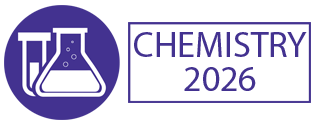Challenges and Opportunities in CADD
Computational techniques are used in computer-aided drug design to find, develop, and study drugs and other physiologically active compounds. The ligand-based computer-aided drug discovery (LB-CADD) method examines ligands that have been shown to interact with a target of interest. Computer-aided drug design (CADD) is a broad term that refers to a variety of theoretical and computational methodologies used in modern drug development. CADD approaches have aided in the creation of medications that are currently in use or are through clinical testing. Along with the experimental procedures employed in drug creation, such methods have emerged and evolved. Millions of drug compounds (virtual screening) and drug targets (protein receptors, enzymes, kinases, signalling proteins, and so on) can be screened using CADD.
- Bioinformatics of Drug Molecules and Databases
- Biomarkers
- Biomedical Instrumentation
- Biosensors
- Drug Delivery Systems
- Drug Intermediates
- Lipase- And Esterase-Mediated Drugs
- Pharmacokinetics and Pharmacodynamics
- Robotics in Medicine

Hossam A Gabbar
Ontario Tech University, Canada
Victor John Law
University College Dublin, Ireland
Alexander Bagaturyants
National Research Nuclear University MEPhI, Russian Federation
Sergey Suchkov
N.D. Zelinskii Institute for Organic Chemistry of the Russian Academy of Sciences, Russian Federation
Shree Niwas Chaturvedi
Centre for Aptitude Analysis and Talent Search, India
Pieter Samyn
SIRRIS, Belgium




Title : Advances in plasma-based radioactive waste treatment
Hossam A Gabbar, Ontario Tech University, Canada
Title : Unraveling the ultrastructure and functions of the neuronal membrane skeleton using super-resolution fluorescence microscopy
Zhou Ruobo, Djillali Liabes University of Sidi Bel Abbes, Algeria
Title : Solar box cooker dehydration, and relative humidity endpoint detection, of lamiaceae culinary leaves on the island of Crete
Victor John Law, University College Dublin, Ireland
Title : Nutrient and heavy metal loads from the Ribeiras to Coastal zones: A land-ocean continuum perspective in Madeira Island
Aracelis Del Carmen Narayan Rajnauth, University of Porto, Portugal
Title : Prospective polyoxometalate-based covalent organic framework heterogeneous catalysts
Arash Ebrahimi, Comenius University Bratislava, Slovenia
Title : Eliminating implant failure in humans with nano chemistry: 30,000 cases and counting
Thomas J Webster, Brown University, United States